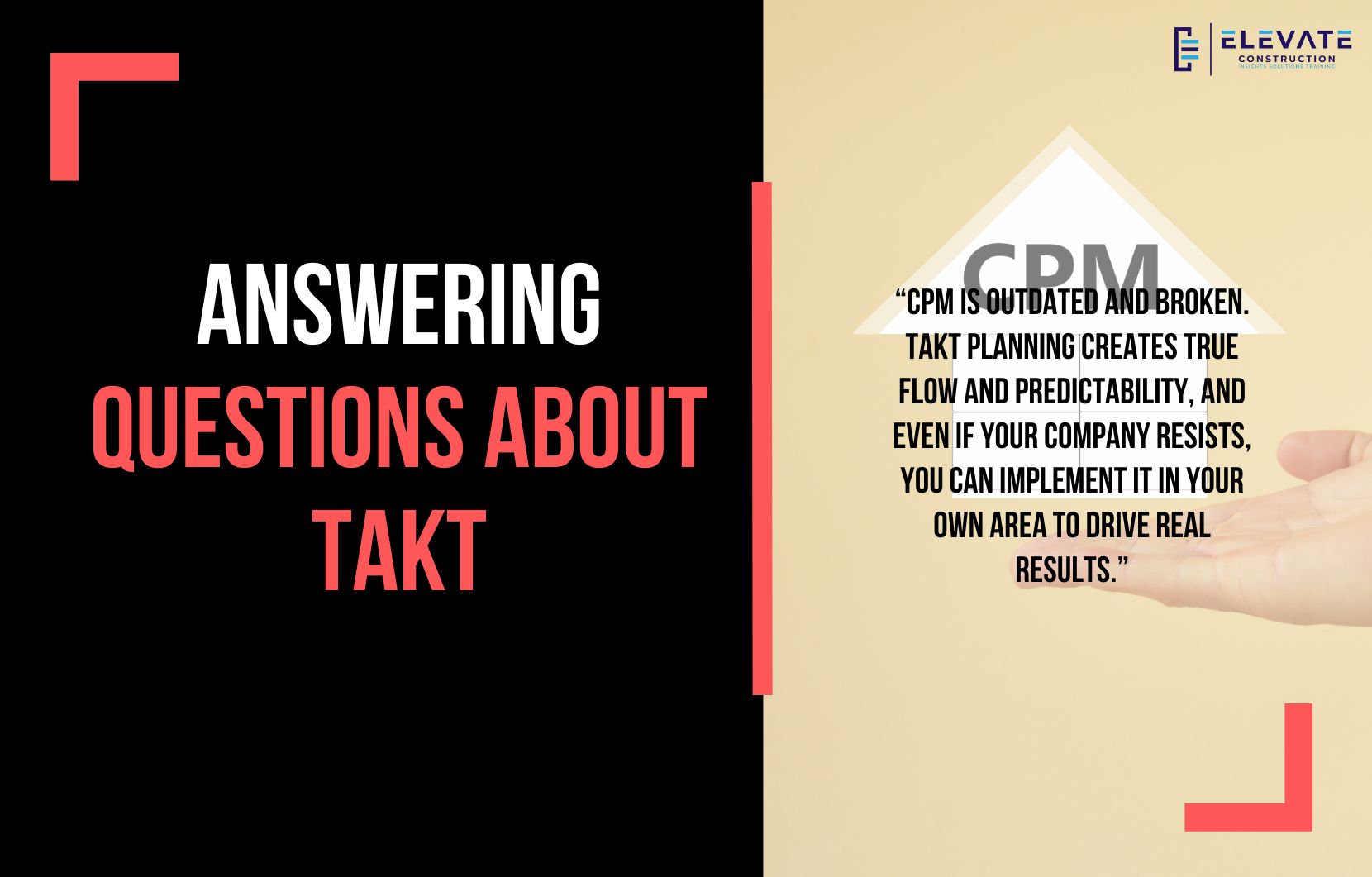Why Takt Planning Beats CPM Every Time
I recently received some thoughtful comments and questions from listeners, and I promised to respond with a full blog on the topic. The comments came from someone working on a large project with multiple buildings and garages. They wanted to know how to incorporate takt planning into their work, especially when their company was still relying on CPM as the guideline.
This is such a valuable question because it highlights a common problem in our industry. Too many projects still depend on CPM schedules, even though they consistently fail to create flow, reduce risk, or deliver projects on time. I cannot stress this enough: CPM is broken. It increases work in process, creates artificial utilization that overwhelms the job site, and extends schedules instead of shortening them. The system is outdated, ineffective, and does not reflect the reality of construction.
So what should you do if your project is stuck in CPM? My answer is to create a takt plan for your area, phase, or building. Even if the overall site is not adopting takt yet, you can still build from your takt plan. Align it with your company’s CPM system by mapping your takt activities into P6, Asta, or Microsoft Project. That way you can still comply with company requirements while actually creating flow and predictability in your work.
One of the best tools for this is the takt calculator. The latest version, 4.2, is designed for preconstruction and can help you level zones, analyze trades, and ensure the right number of zones for your project. Even better, when you are ready, you can use Intakt software, which makes takt planning seamless and efficient.
I also want to address the critics. Some so-called lean experts still fight against takt, and to be honest, it is one of the most short-sighted and ridiculous positions in the industry. Takt planning aligns with every principle of lean production systems. It creates flow, reduces waste, and addresses every concern raised by those who criticize construction scheduling. To dismiss takt while claiming to support lean is to reveal a lack of true lean understanding.
Another question I received was about leveling zones when trades require different durations in the same areas. My recommendation is to use density leveling. Imagine dividing your building into a ten-by-ten grid and rating each square on a scale of one to ten based on work density. Use these scores to create zones of roughly equal density. The smaller variations will work themselves out because trade partners are smart and adaptable. What they cannot adapt to is bad planning that overloads them with too much work in one area.
A great example came up in the comment: fireproofing was holding up framing, which held up everything else. This is a classic bottleneck situation. In takt terms, the bottleneck sets the pace of the project. If fireproofing crews are the slowest link, then their sequence defines the overall flow. If that pace is acceptable, then you accept it. If not, you can break up the crew, add resources, or adjust the sequence to improve the flow.
Another important point raised was about proving the value of takt when others are stuck on CPM. The reality is that data will not convince people. Humans make decisions emotionally and then justify them with logic. People cling to CPM because it is familiar, because they fear change, or because their jobs depend on it. Even if you finish your building faster with takt, some will deny it because it was not their idea.
So what do you do? My advice is to quietly align your CPM schedule with your takt plan so that both formats match. Deliver predictable results in your area. When your building finishes ahead of others, you will know takt was the reason, even if no one acknowledges it. More importantly, you will know that you protected workers, supported families, and delivered value in a way that honors the people who do the work.
At the end of the day, CPM is a system built to fail, and takt is the system built for the future. If you want real results, stop waiting for your company to change. Start creating flow where you can, and let the outcomes speak for themselves.
On we go.
Key Takeaway
CPM is outdated and broken. Takt planning creates true flow and predictability, and even if your company resists, you can implement it in your own area to drive real results.
If you want to learn more we have:
-Takt Virtual Training: (Click here)
-Check out our YouTube channel for more info: (Click here)
-Listen to the Elevate Construction podcast: (Click here)
-Check out our training programs and certifications: (Click here)
-The Takt Book: (Click here)
Discover Jason’s Expertise:
Meet Jason Schroeder, the driving force behind Elevate Construction IST. As the company’s owner and principal consultant, he’s dedicated to taking construction to new heights. With a wealth of industry experience, he’s crafted the Field Engineer Boot Camp and Superintendent Boot Camp – intensive training programs engineered to cultivate top-tier leaders capable of steering their teams towards success. Jason’s vision? To expand his training initiatives across the nation, empowering construction firms to soar to unprecedented levels of excellence.
On we go

